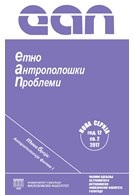Kubrick’s Neobaroque Spectacle: An Aesthetic Analysis of Artificiality and Violence in A Clockwork Orange
Kubrick’s Neobaroque Spectacle: An Aesthetic Analysis of Artificiality and Violence in A Clockwork Orange
Author(s): Biljana PurićSubject(s): Anthropology, Recent History (1900 till today), Sociology of Culture, Film / Cinema / Cinematography
Published by: Филозофски факултет, Универзитет у Београду
Keywords: A Clockwork Orange; Stanley Kubrick; neobaroque topoi; aesthetic analysis; spectacle; violence;
Summary/Abstract: This article examines Stanley Kubrick’s film A Clockwork Orange through the concept of neobaroque. Starting with the basic elements of mise-en-scène such as costumes, scenography, and positioning of the body inside the shots, the aesthetic analysis of the film will move towards more abstract concepts such as spectacle and violence. By identifying these elements inside the film, the film itself could be understood, I argue, as a neobaroque film. Neobaroque film neither refers to a genre or a period in film history. It is an aesthetic term, with implicit references to changes in modern society, denoting a specific but also dynamic constellation of expressive and thematic elements in a given film. Occasional references to Baroque art are included not to make closer ties between two periods or forms of expression, but to suggest and show more clearly where neobaroque concepts stand in relation to the Baroque ones. A Clockwork Orange is not of the only neobaroque film. However, one thing that singles out A Clockwork Orange, is the number of traits, or neobaroque topoi, which are condensed in it. In this article, I will point out the most prominent ones, which are firmly embedded in the aesthetics of the film
Journal: Етноантрополошки проблеми
- Issue Year: 12/2017
- Issue No: 2
- Page Range: 489-503
- Page Count: 15
- Language: English

